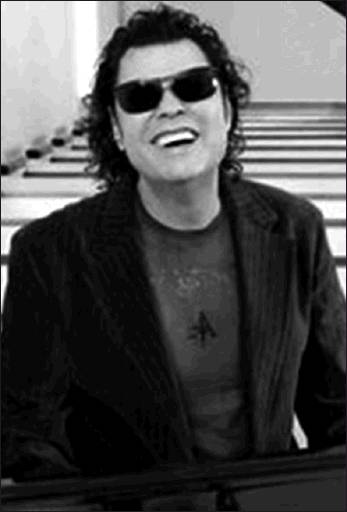Eden Radioisotopes gets funding for nuclear facility
CURTIS C. WYNNENEWS-SUN
Eden Radioisotopes, LLC, an Albuquerque-based startup company, announced this week an investment agreement with Abo Empire, LLC, a Yates Family company, to fund a project to build a reactor of less than 2 megawatts in New Mexico, probably in Lea County, for the purpose of producing medical isotopes, primarily Molybdenum-99.
Known as Moly-99 for short, the isotope is a critical raw material for Technetium-99m, used extensively in medical molecular imaging, also known as nuclear medicine, around the world.
“We’re thrilled to back the Eden team in their mission to provide the world with a dependable supply of Moly-99,” Ryan Price, Vice President of Artesia-based Abo Empire, said in a release from Eden Radioisotopes.
“This project checks many boxes for us: it diversifies family investment through the economic development of the State of New Mexico, creates high-paying, highly technical jobs for our youth to grow into, and does a lot of good for a lot of people,” Price said.
Four years ago, Eden Radioisotope officials told the News-Sun the company’s plan to construct a $60 million facility was on hold pending funding, but warned the need for such a production facility would become obvious shortly because existing facilities were on the verge of shutting down.
Chris Wagner, chief operating officer for Eden, told the News-Sun, “We are still looking at Lea County. It is our intention to be in that general area around Hobbs. We have several different opportunities to look at.”
Seeking a site with 120-160 acres, Wagner said he is working with the Economic Development Corporation of Lea County and county officials to narrow the search, possibly west of Hobbs or south near URENCO USA near Eunice.
He pointed out the jobs to be brought to the facility will be higher than average wages.
“With the nuclear education and friendliness in New Mexico, we think it could be a nice benefit to New Mexico and Lea County,” Wagner added.
In the release, Wagner pointed out molecular imaging is a $4 billion a year global market.
“There are 40 million diagnostic molecular imaging procedures performed worldwide each year, of which 80 percent use Technetium-99m, with 90 percent of those being either cardiac or cancer-related,” Wagner said.
“While the imaging procedures performed in the United States represent more than half of the global use of Moly-99, there is no domestic supplier and no readily available alternative for molecular imaging. Reliability of Moly-99 supply is vitally important to U.S. healthcare,” he added.
Radiopharmaceutical manufacturers worldwide use Moly-99 to produce Molybdenum-99/ Technetium-99m Generators, which are then shipped to hospitals, clinics, and radiopharmacies. As Moly-99 decays to Technetium-99m, it is then used to make individual patient doses for a variety of diagnostic imaging procedures.
For the past 20 years, the global supply of Moly-99 has been precarious at best. Only five reactors around the world have borne primary responsibility for Moly-99 production — in Canada, The Netherlands, South Africa, Belgium and Australia.
Due to age, these reactors have experienced numerous unplanned outages for repairs, causing shortages and price spikes. The Canadian reactor has already begun the decommissioning process, while the Dutch reactor is almost 60 years old and could soon be reaching the end of its useful life.
“Together they represent more than 60 percent of the global supply capacity of Moly-99. With the Canadian reactor now offline, should The Netherlands reactor ever incur a long-term outage before sufficient new replacement capacity becomes available, the molecular imaging industry could experience challenging global supply shortages,” said Wagner.
While Moly-99’s short half-life makes it well-suited for the medical industry, it also means the isotope cannot be stockpiled. One reactor’s unplanned outage quickly translates into a supply shortage for Technetium-99m patients, delaying urgently needed diagnoses.
To help meet this demand, Eden has exclusively licensed a patented reactor technology from Sandia National Laboratories to make Moly-99 in large quantities. Dick Coats, Ph.D., Eden’s Chief Technology Officer and retired Sandia employee, helped develop Eden’s Moly-99 reactor based on technology he helped research in the U.S. Department of Energy-funded Sandia medical isotope production program of the late 1990s.
Coats said, “Eden’s reactor has an all-target, variable-size core of low-enriched uranium which only requires maintenance downtime measured in hours, not days. Should demand require it, the entire reactor core of Moly-99 targets could be processed, generating more than 10,000 Curies of Moly-99 per week, making Eden’s small 2MW reactor unique.”
Coats added, “For comparison, the Eden reactor is similar in size of the research reactors on many university campuses in the US today.”
Larger reactors, from 10MW to 200MW, are cost prohibitive for medical isotope production, Coats said.
“Their purpose is for a multitude of research and happen to also make medical isotopes. When you add in fuel costs, downtime, maintenance, personnel and simultaneous large-scale operations, a typical reactor operator cannot make money on medical isotopes alone,” Coats said. “I’ve been involved with reactors my entire career. There has never been a reactor system designed just to make Moly-99 and other medical isotopes. Our efficiency drives our economy.”
Wagner concluded, “We feel that with proven reactor and Moly-99 target technology, Eden has the most potential for success in the market.”
Employing about 100 people, Eden anticipates entering production in four years with plans to build a facility in New Mexico, probably in Lea County, which has a workforce familiar with nuclear activities due to nearby Sandia & Los Alamos National Laboratories and URENCO USA’s uranium enrichment facility.
Curtis C. Wynne may be contacted at reporter3@hobbsnews.com.


